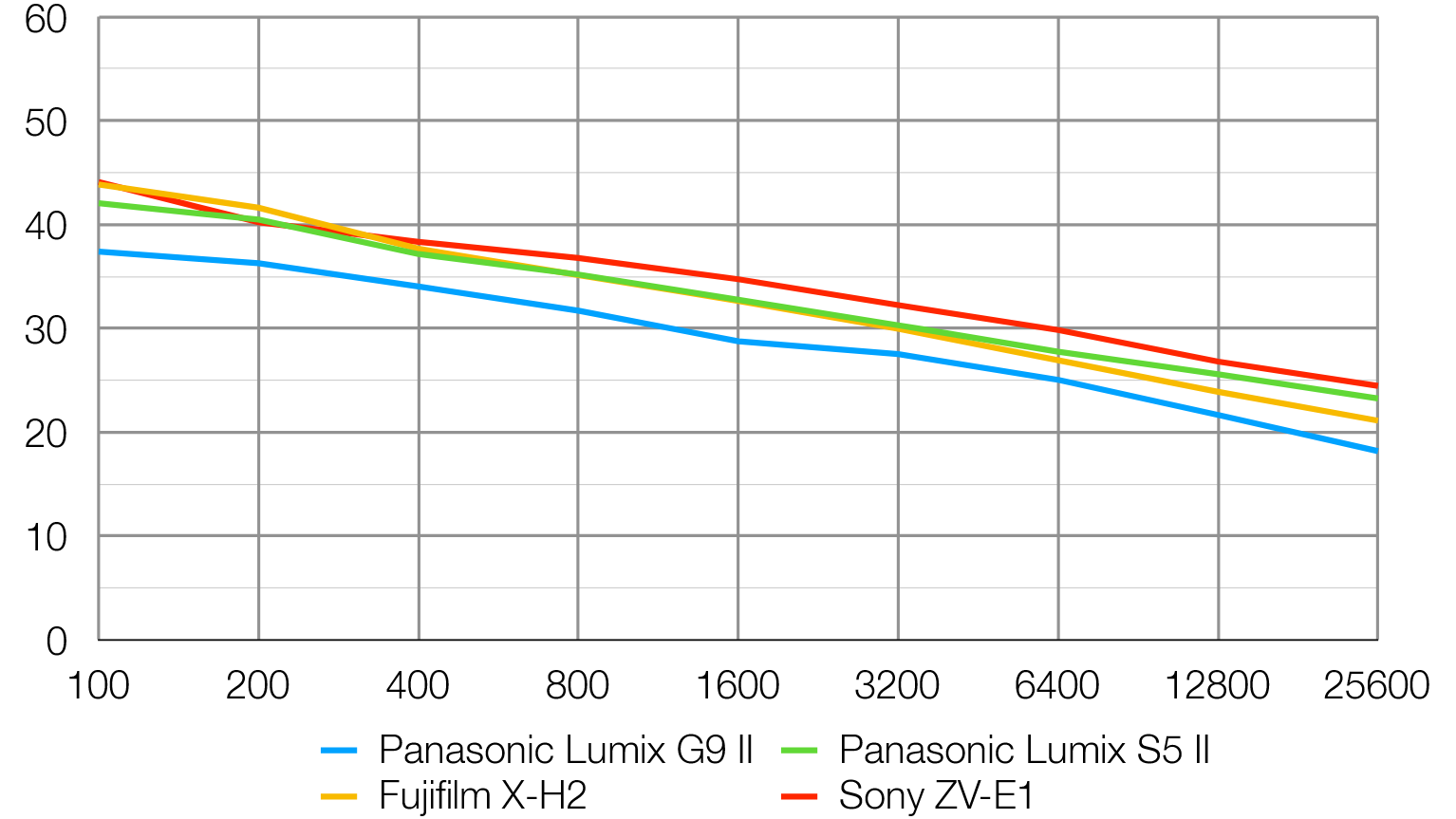Digital Camera World Verdict
Despite its stills-centric roots, the Panasonic Lumix G9 II solidifies the brand's position as the leader for video right now. The G9 II offers a true hybrid camera experience, with well-rounded specs for photo and video that will satisfy a wide range of users. The smaller Micro Four Thirds sensor doesn’t hold back the video, which is simply incredible, with effective in-body image stabilization and hugely improved AF that finally keeps up with the competition. When it comes to stills, if you need more reach for sports or wildlife then the 2x crop factor makes this a compelling option. The G9 II can produce exquisite images, though there are limits to low light performance.
Pros
- +
Much improved autofocusing
- +
User creatable in-camera LUTs
- +
Build & ergonomics top-notch
- +
Impressive stabilization
- +
Increased focal reach of MTF sensor
Cons
- -
No significant size or weight reduction over larger sensor cameras
Why you can trust Digital Camera World
It has been almost six years since Panasonic released the original G9, but that was back when six years was a normal time between camera cycles. By today’s standards, that is an age to wait. However, for Panasonic, this means that the Panasonic Lumix G9 II is actually a fully-fledged upgrade from the first model that you can honestly get excited about.
With Panasonic’s recent focus on its full-frame cameras, with the very well-received Panasonic Lumix S5 II and the growing number of L-Mount Alliance members, many were speculating that Panasonic might be phasing out its Micro Four Thirds (MFT) lineup. Panasonic and Olympus were the pioneers of the MFT sensor and mount, pushing it as a solution to achieve high-quality images with smaller cameras like the technical marvel of the Panasonic GM1. However, as market forces moved toward full-frame cameras, it seemed like Panasonic’s MFT ambitions might have been put on ice.
With this release, Panasonic is certainly not letting up with the format, with the advantages it brings to video as well as genres of photography where having a 2x crop factor brings its own benefits, Panasonic clearly still sees potential in the market. However, the camera landscape is very different now than in 2017 when the original Panasonic G9 was released. Is there still a place for this stills-centric MFT camera?
Panasonic Lumix G9 II: Specifications
| Sensor | Micro Four Thirds Live MOS |
| Effective megapixels | 25.21 |
| Maximum resolutions | 5776x4336 (L) / 4096x3072 (M) / 2944x2208 (S) / 11552x8672 (XL) / 8192x6144 (LL) |
| Autofocus | Phase Detection AF system / Contrast AF system |
| ISO | 100 - 25,600 |
| Burst shooting | 14fps AF-S or 10fps AF-C mechanical shutter, 75fps AF-S or 60fps AF-C electronic shutter |
| Buffer | RAW+JPEG 160+, RAW 170+, JPEG 200+ |
| Video | 5.8k30p, 4.4k60p, 4k120p, FHD 240p |
| Screen | 1.84m dot, 3.0in LCD |
| EVF | 3.68m dot OLED, 60/120fps |
| Weight | 658g / 23.21oz (including battery and SD card) |
| Size | 134.3 x 102.3 x 90.1 mm / 5.29 x 4.03 x 3.55 inch (body only) |
Panasonic Lumix G9 II: Key Features
The standout feature of the Lumix G9 II lies in its enhanced autofocus system. The upgraded autofocus not only facilitates quicker and more precise focusing through an expanded 779-phase detection autofocus system (known as hybrid phase AF on Panasonic cameras) but also introduces more advanced subject recognition and tracking algorithms.
These improvements enable effective tracking of subjects like humans and animals, including their eyes, as well as vehicles such as cars and motorcycles. While it may not match the extensive subject recognition capabilities of some other brands, it certainly covers the essential areas that the majority of photographers require.
Under the hood, the camera boasts a newly designed 25.2MP Live MOS Sensor paired with a brand-new processing engine. By employing a high-resolution pixel shift mode, the G9 II can now generate 100MP images handheld.
The G9 II boasts a top burst speed of 60fps with continuous autofocus, which can be pushed to 75fps without autofocus when using the electronic shutter. However, with the mechanical shutter, the G9 II achieves a more modest 14fps (AF-S) or 10fps (AF-C).
The best camera deals, reviews, product advice, and unmissable photography news, direct to your inbox!
Additionally, the camera features a pre-burst mode that can be set for 1.5, 1, or 0.5 seconds before fully depressing the shutter. This feature proves especially valuable for sports and wildlife photographers, who are a primary target audience for this MFT camera.
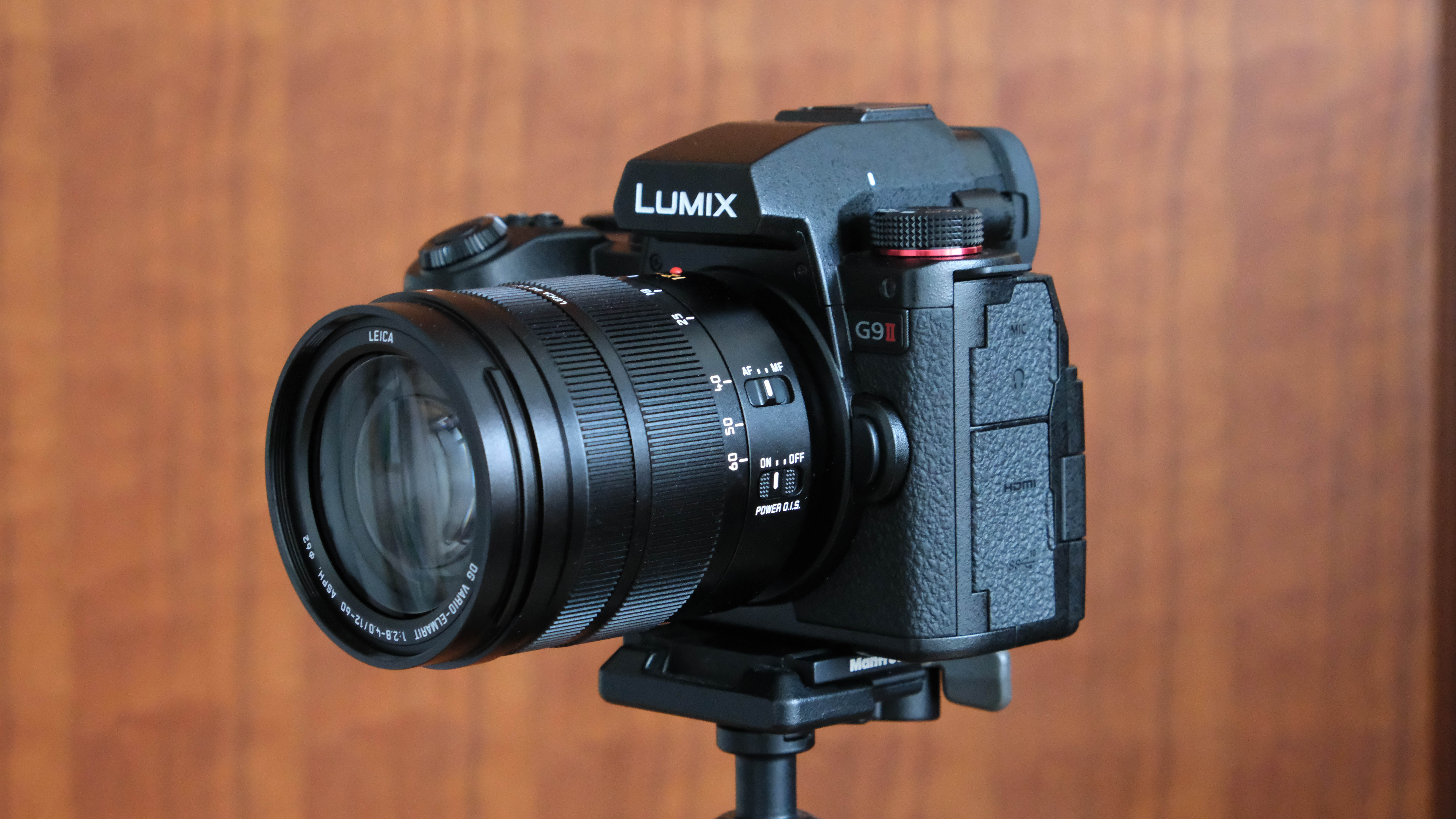

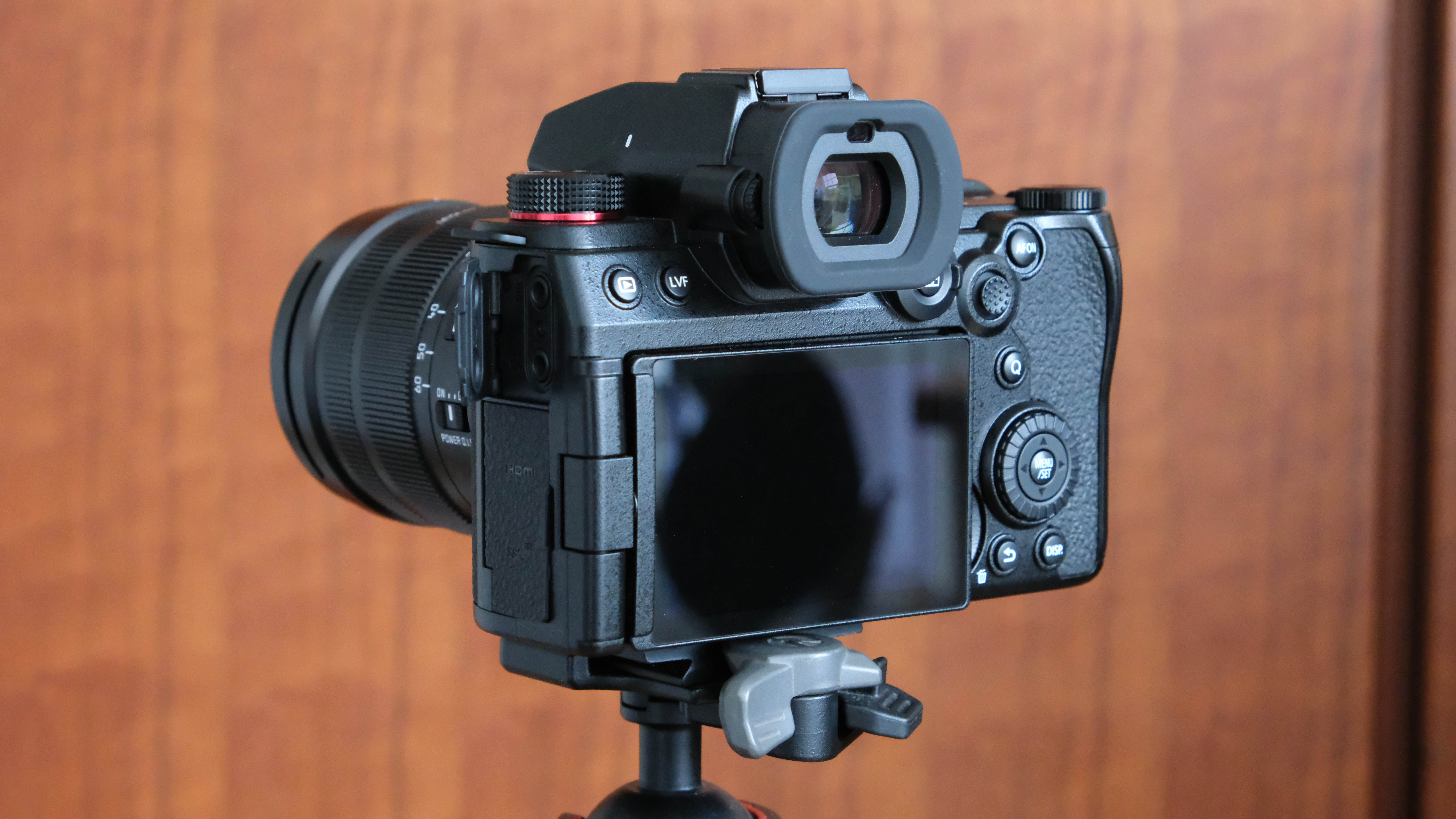

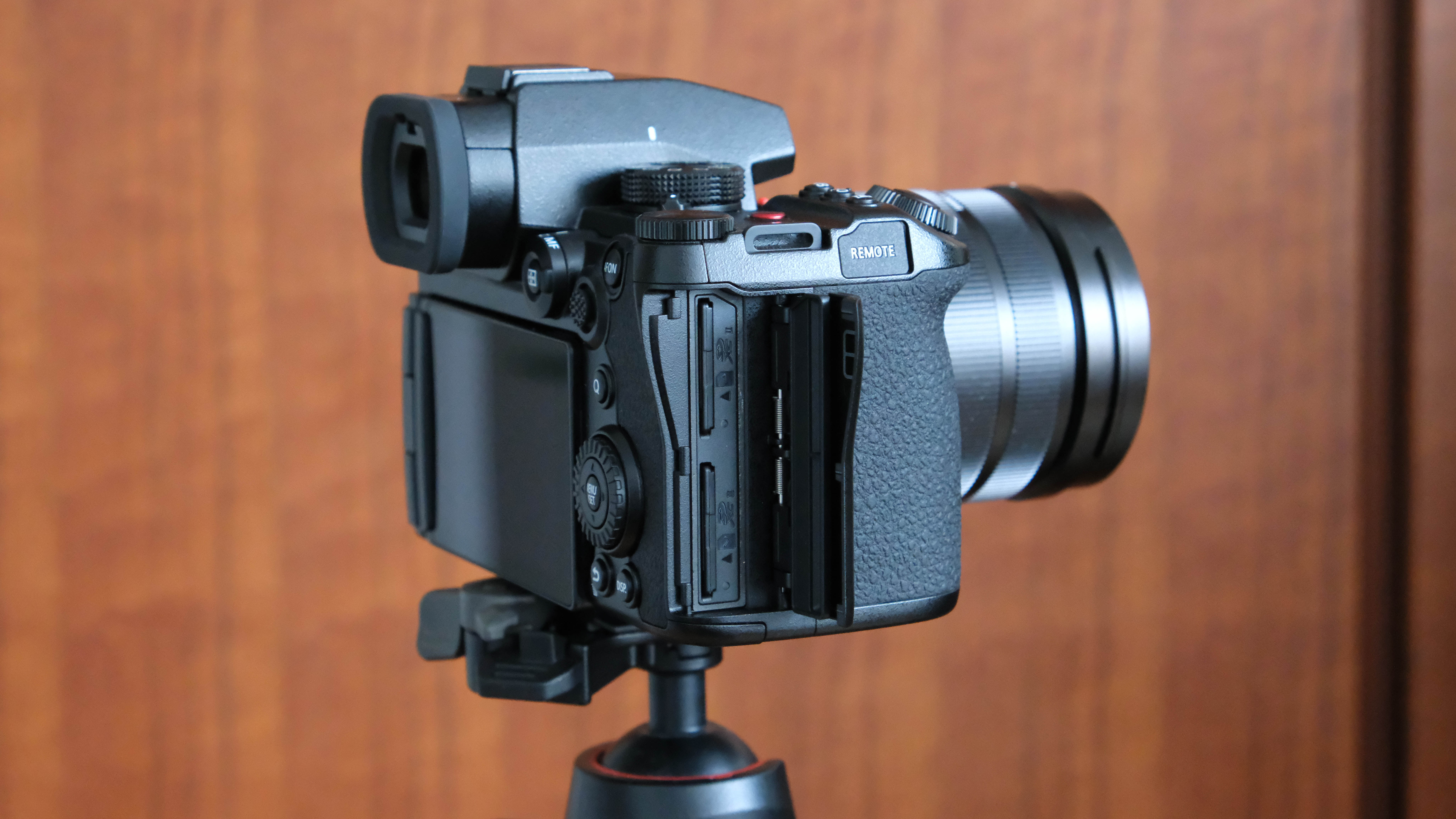

Panasonic has also significantly enhanced its image stabilization system, now offering up to 8 stops of in-body stabilization (known as BIS in Lumix branding). However, this is slightly reduced to 7.5 stops when using lenses longer than 60mm. The camera also incorporates advanced Active IS to provide additional stabilization during more pronounced movements, such as walking or panning.
In the realm of video, the Lumix G9 II introduces new features. Alongside the greatly improved autofocus system, it offers impressive video capabilities with resolutions of 5.7K 60p, 4K 120p, or FullHD 240p. The camera can record in 4:2:0 10-bit, delivering up to 13 stops of dynamic range when shooting in V-Log. Furthermore, it supports recording in Apple ProRes format and enables direct recording to an external SSD.
Additionally, users can create and install real-time LUTs directly onto the camera, and apply them to both photos and videos. The camera includes 19 pre-made LUTs, including the new Leica Monochrome option.
Panasonic Lumix G9 II: Build & Handling
The overall quality of the build is great; the camera undeniably feels solid and well put together, which is backed up by its weatherproof sealing. Following on from the first G9, Panasonic has continued to put every button and dial that most photographers are ever going to need on the G9 II.
There are three command dials, a directional pad, an upgraded eight-way joystick, as well as buttons to change the ISO, exposure, autofocus, and white balance in a jiffy. This camera is a proper old-school photographer's camera, with tactile controls and not much hidden behind complicated or fiddly touchscreen menus.
However, there are a few notable changes from the prior model – the biggest difference being the removal of the top screen, which has been replaced by a separate mode dial. I know some users are very attached to their top screens but, personally, I am not really bothered by its omission, as in reality, on modern cameras with information-laden EVFs, I almost never actually use these screens. So few cameras actually have these screens now that it's probably time to pour one out for the top screen.
The only thing about the build I could find that was unimpressive was the flappy doors that cover the ports on the side of the camera. I found the doors would open far too easily, and wouldn't stay closed unless firmly pressed in, which was a minor and occasional hindrance, but not overly troublesome.
The design of the camera body itself has been refined a little since the last model, with the top of the camera being flattened down from the more rounded design of the G9. The G9 II now looks identical to the Panasonic Lumix S5 II, and with a lens on you won't even notice the difference.
The G9 II has not changed so much that existing G9 users won’t feel right at home, and for new users the system just works. I am not usually a regular Panasonic shooter, but I adapted to the camera controls incredibly quickly.
Overall I think the camera looks good, although I feel it looks a little dated in design. I don't think Panasonic's cameras are the most premium-feeling cameras out there, with other brands using materials and textures I prefer, but existing Panasonic users might be more inclined to its styling.
One thing to note is that the G9 II is not a small camera despite its smaller sensor, which was originally one of the big selling points of the MFT format. Panasonic has made a professional camera with a professional body and great ergonomics, and the ergonomics are exceptional, with a good grip and uncluttered button design. But if you were hoping to make a size saving by buying MFT, then this camera won’t help with that.
Panasonic Lumix G9 II: Performance
Photo performance was excellent during my testing, the G9 II takes really nice images with a fantastic amount of detail. At 25MP there is some room to play with when cropping, although I found the stills yielded some of the finer details when cropped. However, this only becomes an issue when printing large images – for which this camera would not be the first choice anyway.
For use on the web and social media, you should be able to crop images from the G9 II a fair amount while still looking good. Color and dynamic range on JPEGs out of the camera was excellent, and the automatic white balance was accurate and consistent throughout the shoot despite the changing lighting conditions.
To put some misguided assumptions around MFT cameras to bed, image quality is not automatically weaker than in larger sensors, the image quality from the Panasonic G9 II in good light is right up there with the best from larger systems. However low light performance did not fair as well as my Canon full-frame camera. In darker environments, shot at the same settings, the Canon images just had more detail, which in turn allowed me to use settings like faster shutter speeds or narrower apertures giving me more freedom.
There is a mess of math around focal lengths and subject distances but there is a lot of debate if MFT can achieve the same background blur versus larger sensors at the same distance, which can give images a flatter look in some situations.
However, I find this to be less obvious in practice, depending on what I was shooting I could use longer lenses to create more blur, (although this does change the compression). The foreground and background fall off from the G9 II give natural and professional-looking images and will satisfy anyone who isn't insistent on the creamiest of artistic blur. Although if this is you, then full frame or even medium format cameras are where you should be looking.
The major boon of using a Micro Four Thirds sensor is the extended reach it gives you. MTF sensors have a 2x crop factor, which means that the 100-400mm lens I used for testing was equivalent to a 200-800mm lens on a full-frame camera. This made my wildlife shoot so much better. If I wanted the equivalent lens for my Canon full frame camera then not only is anything similar Canon (or Sigma/Tamron) offers absolutely ginormous and heavy, but also prohibitively more expensive.
On paper, MFT lenses are still not small lenses, despite the decreased sensor size, MFT glass can still be notably hefty, but when compared to full-frame lenses that rival their equivalent length they are significantly smaller, lighter, and cheaper.
The image stabilization between the camera and the lens was exceptional, with the latest BIS in the body working wonders. Even at 400mm (800mm equivalent) the combination of the 7.5-stop in-body image stabilization plus the additional optical stabilization in the lens itself gave me not only a steady view through the EVF but also sharp, shake-free images while moving in a jeep on a rough road, although admittedly it was a very bright day, so the shutter speed was high. However, when tested in much dimmer conditions I found that I could get shake-free images at the wider end of the 12-60mm lens down to around 1/5 of a second, although this will depend on your own personal steadiness.
The handheld high megapixel mode continues to be one of the best implementations of this system in any camera, as the G9 II can process the 100MP image directly in the camera and saves you from having to copy files into external software for processing. The camera also handles the processing very quickly, taking around 30 seconds on average to create the high-resolution file.




The high-resolution photos themselves are impressive when you want to crop or print larger images, although there is not as of a dramatic step up in the amount of detail captured over just the single 25MP image some people might hope for. It does give you far more freedom to crop in and preserve more detail, but I still don't think this is a game-changing feature for most users, and while is nice to have in your back pocket, is not worth the hassle most of the time. It also creates files that are four to five times larger than normal. You can open the original images above and pixel-peep for yourself.
Panasonic Lumix G9 II: Sample images


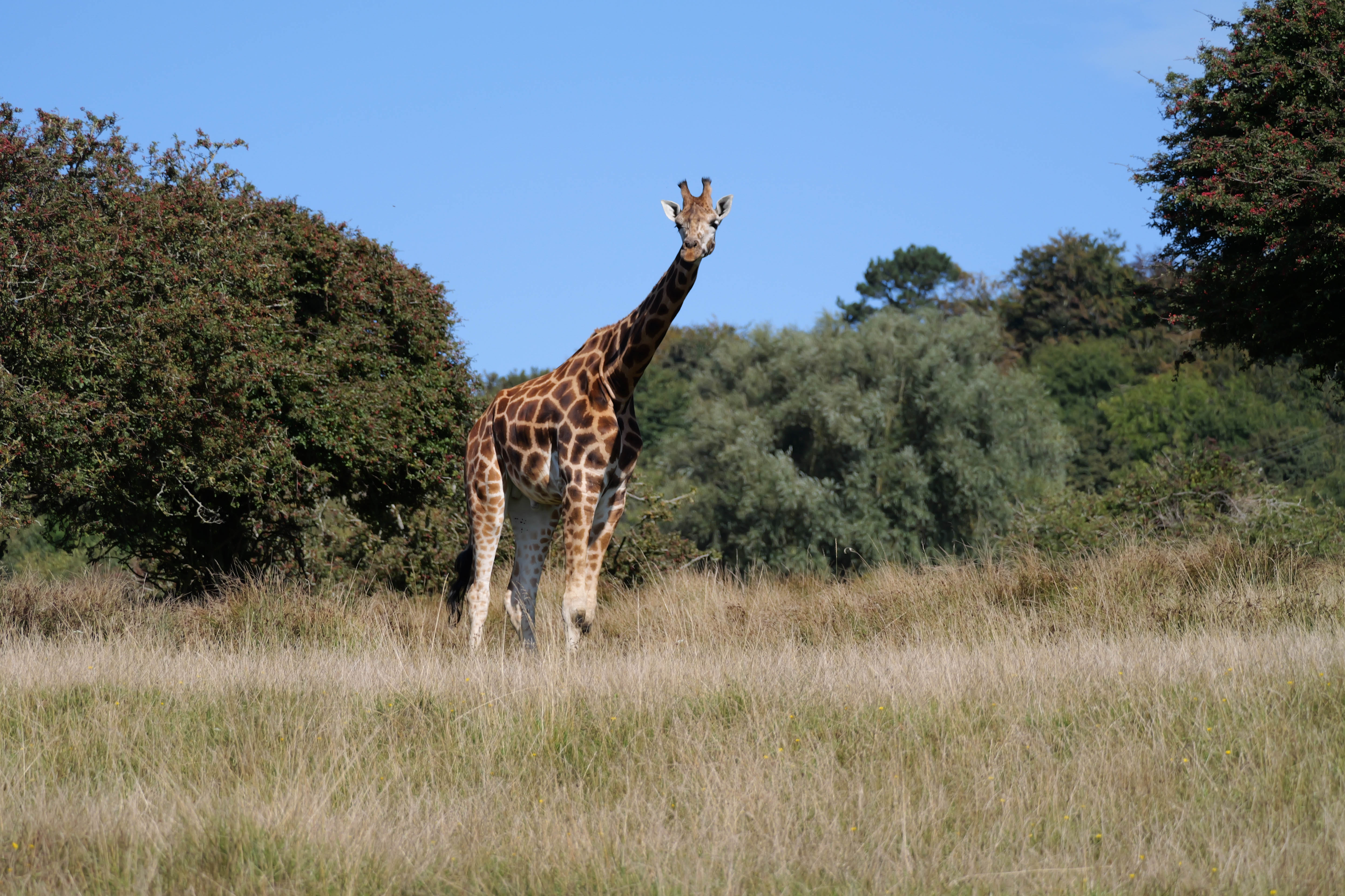






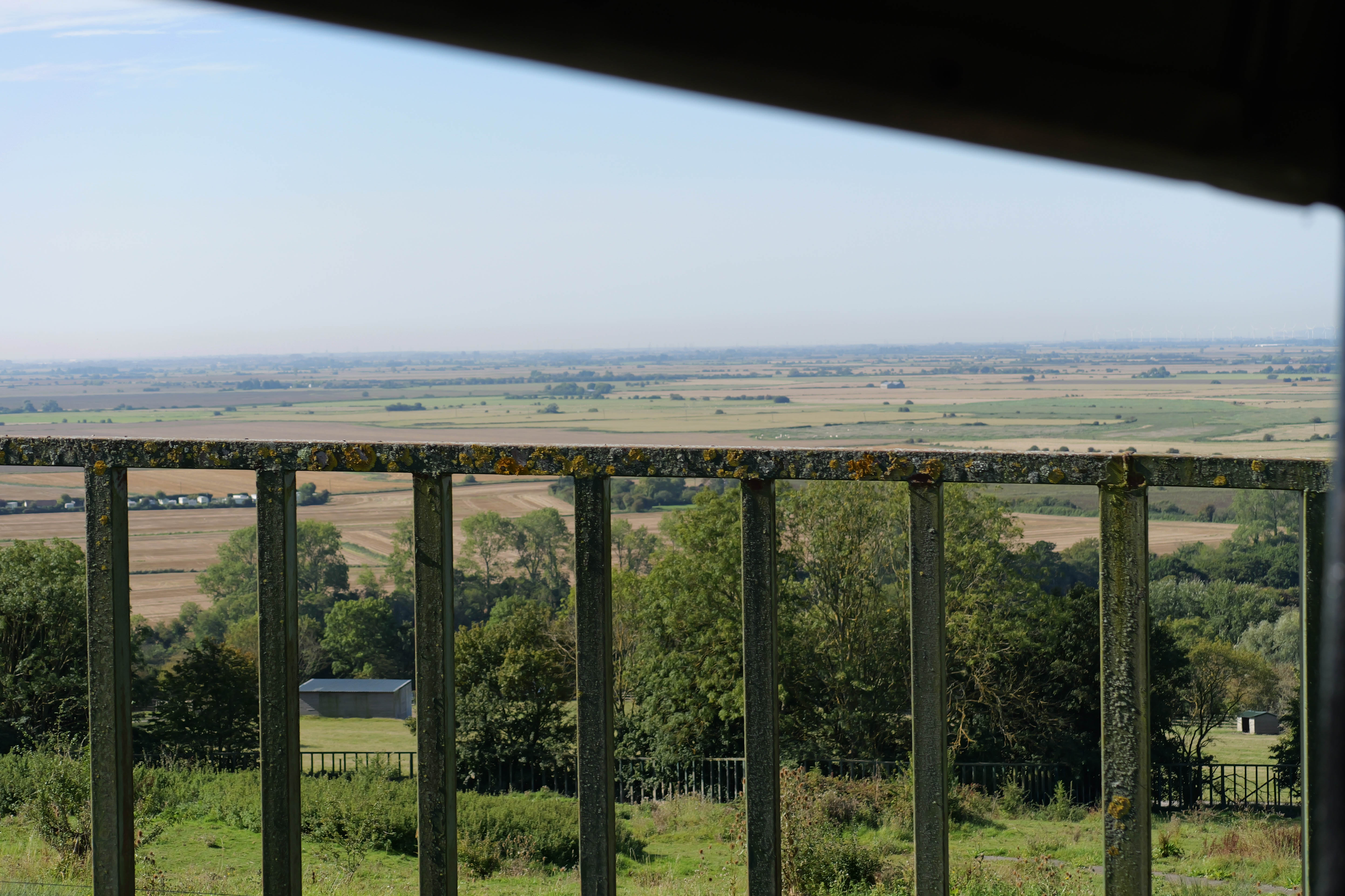
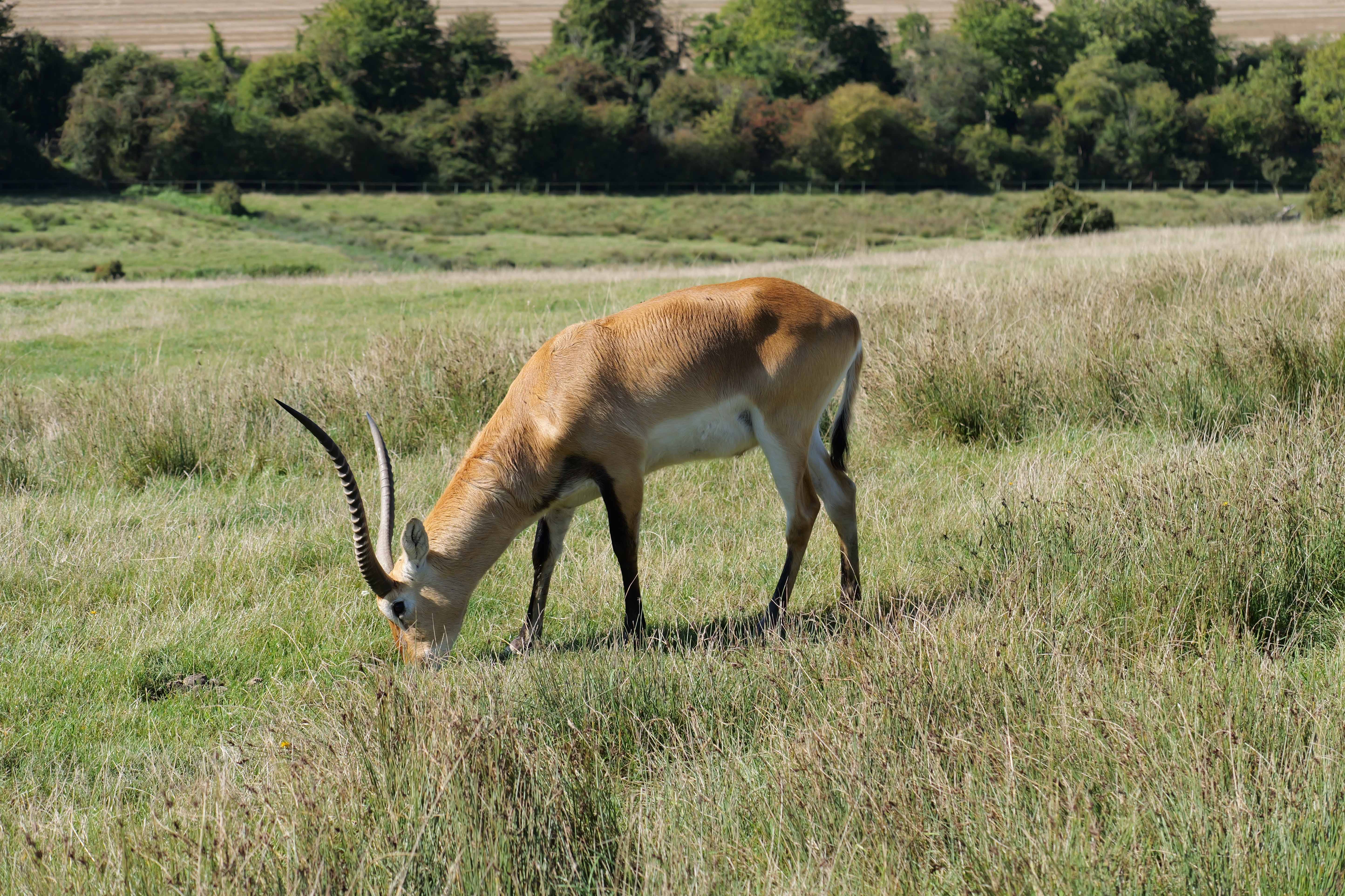

Panasonic Lumix G9 II: Lab results
For our lab data comparison, we compared the G9 II to two of its video-focussed rivals: the Fujifilm X-H2, and Sony's full-frame ZV-E1, as both cameras cost around the same as the G9 II. Another intriguing option is from Panasonic's own stable: namely the Lumix S5 II. Again it's around the same price as the G9 II, but like the ZV-E1, you get a much larger full-frame sensor for your money. The OM System OM-1 would be another obvious choice to include here, however we are yet to lab test it.
We test resolution using Imatest charts and software, and dynamic range and signal to noise ratio with DxO Analyzer.
Resolution:
The G9 II's 25.2MP sensor is excellent at capturing fine detail, providing a marked improvement over the 24MP S5 II, even though the latter has much larger individual pixels, which should improve its image clarity. However, the limitations of the G9 II's small sensor do become apparent at high sensitivities, and at ISO 25,600 image noise is obscuring a lot of detail. Obviously the 40.2MP sensor in the X-H2 is the clear winner in this test, as we'd expect it to be.
Dynamic range:
There's little to separate all four cameras at low sensitivities, proving that sensor size alone really doesn't make much difference for capturing maximum dynamic range in good lighting conditions. But it's in low light where the full-frame cameras come out in front, with the relatively low pixel count of the ZV-E1 paying dividends for capturing wide dynamic range at high ISOs.
Signal to noise ratio:
This test compares the amount of random noise generated by the camera at different ISO settings as a proportion of the actual image information (the 'signal'). Higher values are better and we expect to see the signal to ratio fall as the ISO is increased.
Given the wide range of sensor sizes on test here, all four cameras are quite closely matched, but the G9 II is playing catch-up to the APS-C and full-frame cameras in this test group. It's images are somewhat noisier throughout the tested sensitivity range, though not distractingly so.
Panasonic Lumix G9 II: Video Performance
It is in its video performance that the Panasonic Lumix G9 II really shines. The Panasonic Lumix S5 IIX is probably the best mirrorless camera for video right now, and the G9 II inherits so much of what makes that camera great. Even in my short time testing the camera, I was immediately impressed with not only the video quality but also Panasonic’s huge improvements in image stabilization and focusing.
Video is immediately impressive, the video straight out of the camera is sharp, with great colors and very good dynamic range. There are also on-board LUTs to get color graded footage straight from the camera as well without the added step of editing.
Above: Test footage taken directly from the camera shot handheld with the Panasonic Leica DG Vario-Elmar 100-400mm F/4-6.3 ASPH Power O.I.S. Lens
My initial tests were conducted during a safari around a wildlife refuge organized by Panasonic. This put the new 8-stop (or 7.5, on my lenses over 60mm) in-body stabilization to the ultimate test. Bouncing around in a jeep using a 100-400mm lens the image was impressively stable, not gimbal-level stable, but handheld this appears to be some of the best image stabilization I have come across.
Despite a new active stabilization mode, the footage is still a little jerky in movement like panning and walking, and you can achieve much better results with a gimbal. But the stabilization comes into its own with holding a static shot steady.
Panasonic has also improved the autofocus so much in the G9 II, and it now rivals the AF speed and accuracy of other systems, although still lags a little behind in the amount of subject recognized. Now, however, the system is capable of animal tracking, including animal eyes – and after using it extensively on a day full of the widest variety of animals imaginable, I am pleased to say it works very well.
The G9 II snapped onto every animal subject quickly and accurately, and importantly, it tracked them across the frame. Eye autofocus was also impressive; it didn’t quite get every animal's eye, but I will let it off due to the sheer number of different animals, but its overall hit rate was very pleasing.
Panasonic Lumix G9 II: Final Verdict
The Panasonic Lumix G9 II delivers a true hybrid camera experience, with the G9 II boasting a comprehensive spec sheet that caters to both photographers and videographers. Panasonic has firmly established itself as the leading camera manufacturer for video enthusiasts at the moment, and the G9 II's video capabilities cement that reputation. Video is nothing short of astounding, thanks to its highly effective in-body image stabilization and a vastly improved autofocus system that now finally rivals the competition.
For still photography, the camera's Micro Four Thirds sensor shines when you require greater reach for capturing sports or wildlife moments due to its 2x crop factor, combined with the new faster processor enabling a blisteringly fast readout speed. The G9 II is capable of producing stunning images with an impressive amount of sharpness and color, but the MTF sensor struggles a little in low-light situations compared to bigger sensors.
Overall the Panasonic G9 II is a worthy follow-up to the original model and certainly demonstrates why Panasonic is right to not give up on the MFT mount just yet, and why you might not want to either.
You might also like...
If you are almost sold on the Lumix G9 II but wish it had a full frame sensor, then the Panasonic Lumix S5 II is the camera you are looking for. With the same body and features as the G9 II, but with a bigger sensor allowing better low light performance and depth of field, although this will come at the cost of reduced focal length versus the G9 II.
If you are a MFT fan, but maybe aren’t into the styling of the Lumix G9 II then the OM System OM-1 is a worthy alternative. It comes in at slightly more expensive, but it offers a lot of the same feature set as the G9 II give or take. Plus you can still use any MFT lenses you already own, including Panasonic’s.
Read More: Check out our guides for our top picks for the best Micro Four Thirds cameras and best Micro Four Thirds lenses.

Gareth is a photographer based in London, working as a freelance photographer and videographer for the past several years, having the privilege to shoot for some household names. With work focusing on fashion, portrait and lifestyle content creation, he has developed a range of skills covering everything from editorial shoots to social media videos. Outside of work, he has a personal passion for travel and nature photography, with a devotion to sustainability and environmental causes.












